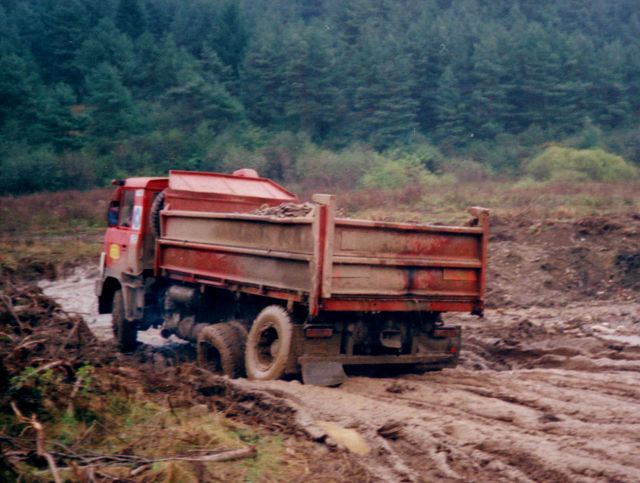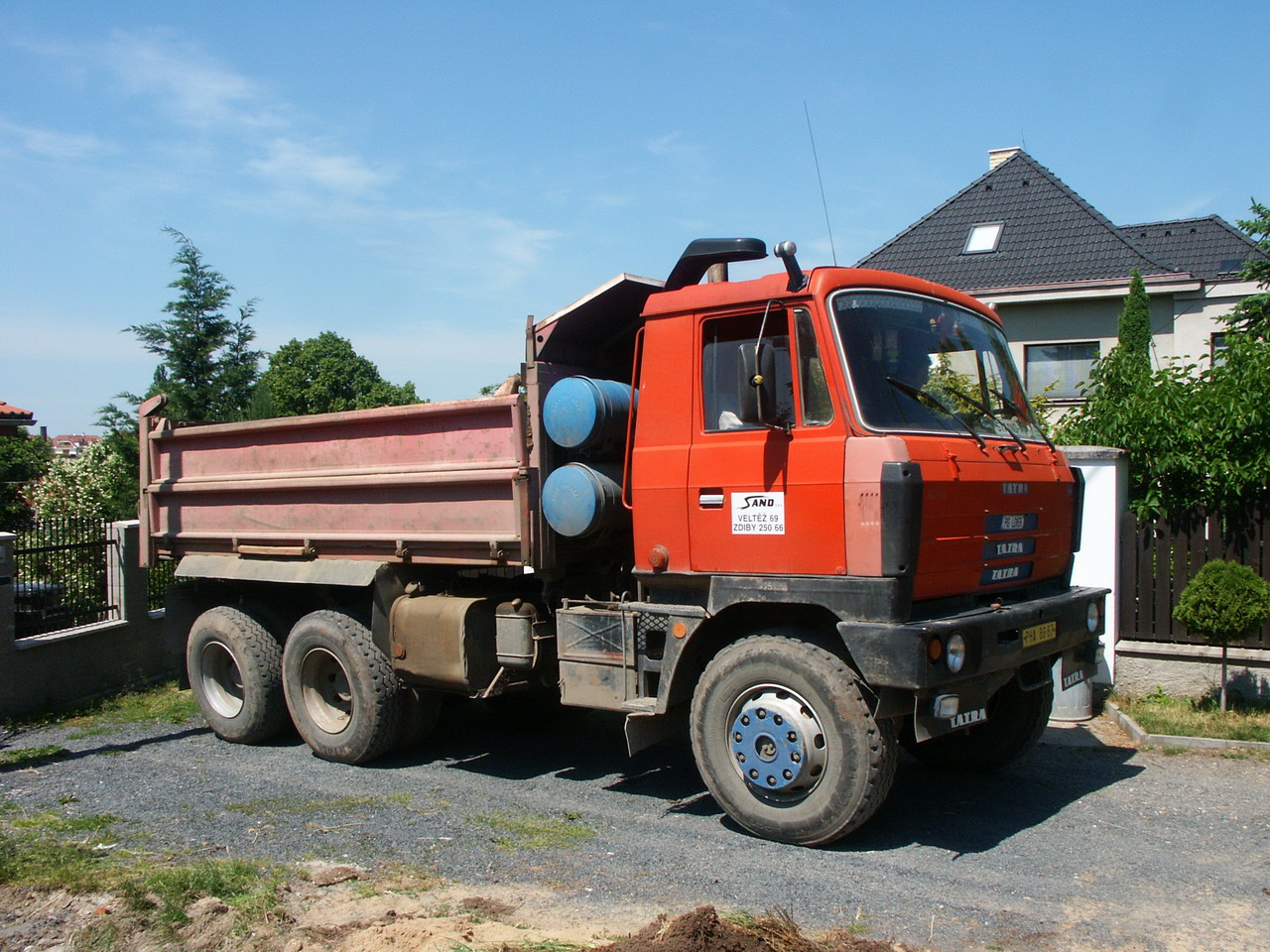I just come up with a thought I was wondering in the past, and trucknet can be the best place to ask.
Most of you propable never saw the Tatra tipper, but they were (and still are) very popular in many countries, not only in Eastern Europe.
The point is: the rear suspension.
See the position of the rear wheels:
Can’t find any picture with a rear view
(except of that one, quite impressive, but it do not shows what I need:
 )
)
So, coming back to the first one: see the wheels, they are not vertical, but in some angle.
If you are following the lorry and it’s empty, you can actually see, that the inner wheels are not touching the ground at all, and the lorry goes only on the edges of the outer wheels.
What’s the point of this kind of suspension? I guess driving on the tyre edges do not help with saving tyres… It can be also dodgy drivingwise… But as we can see from the off-road picture, the suspension has amazing range…
So is it done to enhance it’s off road skills? Or there is another reason?
And if it’s a good solution (Tatra was making these lorries for years and they were very appreciated) is there any other make using that?
(note: if the lorry is heavy loaded, it looks as every other ordinary lorry with all four wheels from rear axles driving fully on the ground).

